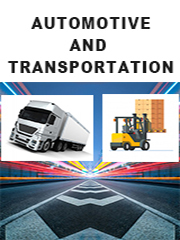Report overview
A battery liquid cooling plate is a thin metal fabrication which includes one or more internal channels through which a liquid coolant is pumped. Heat is conducted from the battery cells into the cooling plate, and transported away by the coolant.
This report aims to provide a comprehensive presentation of the global market for New Energy Vehicles Battery Liquid Cooling Plates, with both quantitative and qualitative analysis, to help readers develop business/growth strategies, assess the market competitive situation, analyze their position in the current marketplace, and make informed business decisions regarding New Energy Vehicles Battery Liquid Cooling Plates. This report contains market size and forecasts of New Energy Vehicles Battery Liquid Cooling Plates in global, including the following market information:
Global New Energy Vehicles Battery Liquid Cooling Plates Market Revenue, 2018-2023, 2024-2029, ($ millions)
Global New Energy Vehicles Battery Liquid Cooling Plates Market Sales, 2018-2023, 2024-2029, (K Units)
Global top five New Energy Vehicles Battery Liquid Cooling Plates companies in 2022 (%)
The global New Energy Vehicles Battery Liquid Cooling Plates market was valued at US$ million in 2022 and is projected to reach US$ million by 2029, at a CAGR of % during the forecast period. The influence of COVID-19 and the Russia-Ukraine War were considered while estimating market sizes.
The U.S. Market is Estimated at $ Million in 2022, While China is Forecast to Reach $ Million.
Harmonica Tube Liquid Cooling Plates Segment to Reach $ Million by 2029, with a % CAGR in next six years.
The global key manufacturers of New Energy Vehicles Battery Liquid Cooling Plates include Valeo, Dana, MAHLE, Modine Manufacturing, Boyd Corporation, Nippon Light Metal, ESTRA Automotive, ONEGENE and PWR Corporate, etc. in 2022, the global top five players have a share approximately % in terms of revenue.
We surveyed the New Energy Vehicles Battery Liquid Cooling Plates manufacturers, suppliers, distributors and industry experts on this industry, involving the sales, revenue, demand, price change, product type, recent development and plan, industry trends, drivers, challenges, obstacles, and potential risks.
Total Market by Segment:
Global New Energy Vehicles Battery Liquid Cooling Plates Market, by Type, 2018-2023, 2024-2029 ($ Millions) & (K Units)
Global New Energy Vehicles Battery Liquid Cooling Plates Market Segment Percentages, by Type, 2022 (%)
Harmonica Tube Liquid Cooling Plates
Stamping Liquid Cooling Plates
Inflatable Liquid Cooling Plates
Global New Energy Vehicles Battery Liquid Cooling Plates Market, by Application, 2018-2023, 2024-2029 ($ Millions) & (K Units)
Global New Energy Vehicles Battery Liquid Cooling Plates Market Segment Percentages, by Application, 2022 (%)
Pure Electric Vehicle
Plug-in Hybrid Car
Global New Energy Vehicles Battery Liquid Cooling Plates Market, By Region and Country, 2018-2023, 2024-2029 ($ Millions) & (K Units)
Global New Energy Vehicles Battery Liquid Cooling Plates Market Segment Percentages, By Region and Country, 2022 (%)
North America
US
Canada
Mexico
Europe
Germany
France
U.K.
Italy
Russia
Nordic Countries
Benelux
Rest of Europe
Asia
China
Japan
South Korea
Southeast Asia
India
Rest of Asia
South America
Brazil
Argentina
Rest of South America
Middle East & Africa
Turkey
Israel
Saudi Arabia
UAE
Rest of Middle East & Africa
Competitor Analysis
The report also provides analysis of leading market participants including:
Key companies New Energy Vehicles Battery Liquid Cooling Plates revenues in global market, 2018-2023 (Estimated), ($ millions)
Key companies New Energy Vehicles Battery Liquid Cooling Plates revenues share in global market, 2022 (%)
Key companies New Energy Vehicles Battery Liquid Cooling Plates sales in global market, 2018-2023 (Estimated), (K Units)
Key companies New Energy Vehicles Battery Liquid Cooling Plates sales share in global market, 2022 (%)
Further, the report presents profiles of competitors in the market, key players include:
Valeo
Dana
MAHLE
Modine Manufacturing
Boyd Corporation
Nippon Light Metal
ESTRA Automotive
ONEGENE
PWR Corporate
Hella
Mersen
Bespoke Composite Panel
Senior Flexonics
Priatherm
Kaweller
Shenzhen Cotran New Material
Yinlun Co., Ltd
Shenzhen FRD Science & Technology
Lucky harvest
Sanhua
HASCO
JONES Tech
Nabaichuan
SONGZ
Outline of Major Chapters:
Chapter 1: Introduces the definition of New Energy Vehicles Battery Liquid Cooling Plates, market overview.
Chapter 2: Global New Energy Vehicles Battery Liquid Cooling Plates market size in revenue and volume.
Chapter 3: Detailed analysis of New Energy Vehicles Battery Liquid Cooling Plates manufacturers competitive landscape, price, sales and revenue market share, latest development plan, merger, and acquisition information, etc.
Chapter 4: Provides the analysis of various market segments by type, covering the market size and development potential of each market segment, to help readers find the blue ocean market in different market segments.
Chapter 5: Provides the analysis of various market segments by application, covering the market size and development potential of each market segment, to help readers find the blue ocean market in different downstream markets.
Chapter 6: Sales of New Energy Vehicles Battery Liquid Cooling Plates in regional level and country level. It provides a quantitative analysis of the market size and development potential of each region and its main countries and introduces the market development, future development prospects, market space of each country in the world.
Chapter 7: Provides profiles of key players, introducing the basic situation of the main companies in the market in detail, including product sales, revenue, price, gross margin, product introduction, recent development, etc.
Chapter 8: Global New Energy Vehicles Battery Liquid Cooling Plates capacity by region & country.
Chapter 9: Introduces the market dynamics, latest developments of the market, the driving factors and restrictive factors of the market, the challenges and risks faced by manufacturers in the industry, and the analysis of relevant policies in the industry.
Chapter 10: Analysis of industrial chain, including the upstream and downstream of the industry.
Chapter 11: The main points and conclusions of the report.
